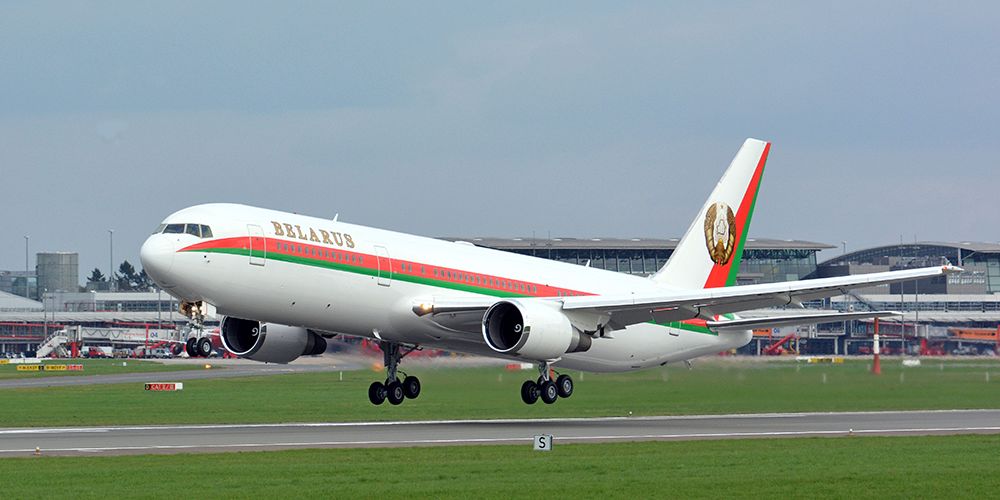Search

Publications
Visit by the President of Belarus to Iran: geopolitical context

In February this year, President of Belarus Alexander Lukashenko met with the Ambassador Extraordinary and Plenipotentiary of the Islamic Republic of Iran (IRI) Said Yari. During the meeting the Byelorussian President mentioned his intention to visit Teheran on an official visit.
According to the head of state, the ground for taking such decision was the invitation by the President of Iran Ebrahim Raisi and the trip itself was scheduled for mid-March 2023. «I am absolutely sure that our meeting and negotiations in Iran will be significant and will elevate us to a higher level of cooperation. But the main thing is that we must not lose this opportunity and this time to establish our relations on a higher level», said A.Lukashenko. [1]
In his turn, Iran’s Ambassador said that «the Byelorussian President’s visit to Teheran has tremendous importance for us. There are very important both political and trade-economic issues on the agenda. Relations between Belarus and Iran are now at the height of their development and we are sure that after the Byelorussian President’s visit to IRI our relationship will develop even more».
In the light of the aforesaid circumstances it is essential to underline that the conclusions of the Caspian Institute of Strategic Studies about the necessity to intensify bilateral contacts between Belarus and Iran on a high and highest levels were reflected in the practical policy pursued by the official Minsk.
It is also worth noting that organization of the Byelorussian President’s visit to Iran was preceded by the significant preparation the parameters of which was set during the negotiations of Alexander Lukashenko and Ebrahim Raisi on the sidelines of the Shanghai Cooperation Organization (SCO) summit in September 2021. Besides, in this context we should not forget about the visit to Teheran by Belarus’ Foreign Minister Vladimir Makei (he died suddenly on November 26, 2022).
That said, the foreign policy of the Republic of Belarus, including the Iranian direction, is traditionally viewed in the context of trade-economic interests, which is natural for export-oriented economy and for mostly technocratic government of the country. However, at present Byelorussian-Iranian ties, particularly in terms of modern international situation when both Minsk and Teheran are subjected to massed sanctions and political pressure by the collective West, occupy pro-Russian position with relation to the special military operation (SMO) in the territory of Ukraine, it also seems necessary to make a geopolitical analysis.
Tacit alliance: quadrangle Minsk – Moscow – Peking – Teheran
In our view, it is obvious that in the time of the world order reformatting one can observe rapprochement of various powers belonging to different blocs, having peculiar features of the political model and even mutual contradictions, but stating a common goal – sovereign development on the platform of national interests, non-acceptance of any deviant attitudes (the so called «European values») and of a globalist model of the world «based on rules» led by the collective West under the authority of the USA.
Among such states one can name China, Iran, North Korea, Turkey, UAE, Saudi Arabia, India, Myanmar, Hungary, Cuba, Belarus, Syria, Azerbaijan, Brazil, South Africa and many others. Naturally, it would be incorrect now to speak about any «alliance» between these countries, however it is already possible to state the coincidence of interests and situational support. At the same time, international importance, authority and influence of the Shanghai Cooperation Organization (SCO), as well as such inter-governmental association as BRICS (Brazil, Russia, India, PRC and South Africa) created on the sidelines of the Saint-Petersburg Economic Forum on June 2006 tend to grow progressively.
Getting back to the Byelorussian-Iranian context, in 2022 Iran became a full-fledged SCO member, while the Republic of Belarus submitted an application for membership in this organization which is expected to be approved during the current year. This actually means not only SCO expansion, but also failure of the collective West to isolate Minsk and Teheran which will definitely reinforce their international positions through the membership in the organization uniting more than one third of the planet’s population and accumulating about 25% of the world GDP.
Moreover, we believe that in the modern world international picture one can discern the contours of a tacit alliance in the quadrangle Minsk – Moscow – Peking – Teheran. In this connection, it is noteworthy that on the eve of the visit to Iran the Byelorussian leader visited the People’s Republic of China where Alexander Lukashenko met with a number of top-ranking officials and Chairman Xi Jinping. Despite the fact that the portfolio of signed contracts amounted to 3.6 billion dollars and the visit itself had unprecedented importance for the Byelorussian-Chinese relations China’s expert community assessed these events primarily in terms of geopolitics and specifically in the framework of the SMO.
In particular, the Director of the European Department of the Chinese Institute of International Studies Cui Hongjian said that the visit by the President of Belarus Alexander Lukashenko to the PRC will allow Peking to understand more clearly the position of Minsk on the conflict between Russia and Ukraine. In the interview to the Global Times Cui Hongjian underscored that «for China it will be very constructive to sort out the crisis situation generally and to play a more active role in facilitating political settlement». [3]
It should be noted that the western countries and Ukraine also regard more active Byelorussian-Chinese contacts exclusively in the context of geopolitical confrontation. The White House «condemned» Alexander Lukashenko’s visit to China, while the Institute for the Study of War (ISW) reputed to serve as a cover for the US intelligence services published a material which stated that «Minsk and Peking signed 16 documents which can facilitate circumvention by Russia of the western sanctions». ISW experts also came to the conclusion that «China may secretly carry military materiël or dual use equipment through Belarus». The Ukrainskaya Pravda publication predictably echoes American analysts saying that «agreements between Lukashenko and Xi Jinping may allow Putin to get assistance from China».
Contours of the new world: some aspects of diplomatic contacts
Despite the fact that both ISW and the Ukrainian sources can hardly be trustworthy because of repeated precedents of publishing disinformation, fakes and false information, one cannot help but notice a certain consistency of diplomatic contacts between Moscow, Minsk, Teheran and Peking indirectly explaining «concern» of the western camp representatives.
In particular, on February 14, 2023 President of the Islamic Republic of Iran Ebrahim Raisi arrived in the Chinese capital. In negotiations with the Chairman of the PRC Xi Jinping he confirmed adherence to «strengthening strategic partnership with China», as well as invited the Chinese leader to pay a return visit which was positively taken by Peking which promised to «arrive in Iran at the convenient time». [3]
Later, just a few days after the negotiations between Xi Jinping and Ebrahim Raisi, Wang Yi, Director of the Chinese Communist Party Central Committee Foreign Affairs Commission Office, visited Moscow. The visit coincided in time with the above-mentioned meeting of Alexander Lukashenko with the Ambassador of the IRI during which the forthcoming visit of the Belarus’ President to Tehran was announced. With regard to the aforesaid circumstances one cannot exclude that Lukashenko’s arrival in Iran will take place on the eve of PRC Chairman Xi Jinping’s visit to Moscow which the diplomatic circles expect in the nearest future.
At the same time the USA now openly threatens to impose sanctions on the PRC in the event of supplies of Chinese weapons and ammunition to Russia while the Byelorussian President Alexander Lukashenko said that the Byelorussian- Chinese industrial park Great Stone built near Minsk is a «pearl of the Silk road» that can «unite industrial policies of Belarus, Russia and China». [4]
Getting back to the Iranian-Chinese relations it is worth mentioning that China is the main economic partner of Iran with the total trade volume exceeding 20 billion dollars, as well as the key investor into Iran’s economy. In March 2021 an Agreement on comprehensive strategic partnership for the period of 25 years was signed between the PRC and IRI. Its fundamental provision is an understanding on purchases by China of Iranian oil with a discount in exchange for investments into Iran’s economy in the amount of 400 billion dollars. [5]
In early 2022 Iran’s Foreign Minister Hossein Amir Abdollahian stated that this agreement is now at the implementation phase. In our opinion, E. Raisi’s three-day visit to Peking was related to the elaboration of practical details for implementing the understandings reached, in particular, payment transactions complicated by the sanctions illegally applied against Teheran by the USA and other western countries.
Reportedly, China and Iran are currently working on the practical steps aimed at simplifying payments, including the use of banking channels, foreign currency other than the US dollar or various forms of commodity exchange. Such practices have been actively applied by China lately which is indicated by the content of Xi Jinping’s recent negotiations with the leaders of the Cooperation Council for Arab States of the Gulf (CCACG) during which Peking stated the need to promote yuan settlement of oil and gas trade with the CCACG countries.
Assessing the above-stated information in conjunction with gradual abandonment of the US dollar in the Byelorussian-Russian and Russian-Turkish trade, conversion of oil supply settlements between the RF and India into the UAE Dirhams, it is possible to assert that China, Russia, India, Iran, Arab states consistently pursue the policy of de-dollarization of the world economy, which understandably causes irritation and opposition on the part of Washington.
In point of fact, the American hegemony is being contested politically, militarily, scientifically, financially and economically. Using Alexander Lukashenko’s figure of speech, «the world is tired of the American stranglehold» and many countries openly refuse to follow US instructions, adhere to the goals of sovereign policy and are ready to put their will into practice by making practical steps on the international arena.
Deputy Chief of the General Staff of the Islamic Republic of Iran Brigadier General Ali Abdollahi stated: «We want countries to respect each other and not to interfere in the internal affairs of other states. These are the best conditions for our region. Many countries are now afraid of the Americans, in the conditions of sanctions you felt it. It is necessary to limit the sphere of influence of the United States. Countries such as Russia, China, Iran, India can do this. We have the Shanghai Cooperation Organisation, which is a very effective organisation, and many countries want to join it. Within the framework of the SCO, we must open up new areas and opportunities for cooperation». [6]
Nuclear research: prospects of cooperation
In this connection it is noteworthy that in the new US nuclear strategy (Nuclear Posture Review) approved by President Joe Biden and openly published in October 2022 four states – Russia, China, North Korea, as well as Iran – are reviewed as the main probable adversaries. With this, the People’s Republic of China is declared «the most important challenge for the USA in the sphere of defense planning and an increasingly essential factor for revising the system of nuclear deterrence measures». At the same time, since Iran, though not a source of nuclear threats to the USA but is developing the respective technologies, Washington’s policy, therefore, is «aimed at prevention of Teheran from creating a nuclear arsenal».
In principle, such presentation of a problem is traditional for the American military and political thought, however, experts draw attention to the fact that unlike the previous «strategies», the document contains an essential novelty: as per the forecast, by 2030 the USA will for the first time face a situation when it will have to compete on a strategic level with the two nuclear powers simultaneously and consider them as equal probable adversaries. [7]
Therefore, in the context of geopolitical confrontation with the USA vulnerability of Americans in the Iranian direction is quite understandable. Possession of nuclear weapons will become for Iran a reliable means of deterrence, guarantee of security against interventionist encroachment of the USA and its satellites on the model of North Korea the nuclear program of which became an reliable safeguard against foreign intervention and stopped the US military during the tenure of President Trump under the threat of inflicting unacceptable damage.
In this connection, the field for interaction between China, Russia, Iran and Belarus possessing certain competencies concentrated in the state scientific establishment Joint Institute for Power and Nuclear Research Sosny of the National Academy of Sciences of Belarus looks quite extensive. In furtherance of this subject it important to stress that, according to the new edition of the Constitution adopted after the national referendum on February 27, 2022, the non-nuclear commitment was excluded from the Byelorussian Constitution’s provisions. Respectively, there is now some leeway for maneuvering both in the field of nuclear research and cooperation with the partner countries and for symmetrical response in the form of deployment of Russian nuclear weapons in the Byelorussian territory in case of further militarization and nuclearization of the East European countries, deployment of American tactical nuclear weapons and ABM system in the region.
Conclusion
In any case the forthcoming visit of Alexander Lukashenko to Iran will become an important event not only for the bilateral trade-economic relations, but also in the context of building an alternative world order the driving forces of which at this stage are Moscow and Peking.
Extension of production cooperation in the critically important branches with the use of possibilities of the Byelorussian-Chinese industrial park Great Stone, deepening of military and technical cooperation, interaction between national analytical centers and intelligence services, coordination of efforts within the framework of SCO, enhancing the organization’s prestige on the international arena and drawing up a comprehensive program of foreign policy cooperation are promising subjects for the forthcoming negotiations between the heads of states of Iran and Belarus.
In our opinion, it is obvious that support to China’s foreign policy, ensuring Russia’s success in the military operation and defeat of the western coalition led by the USA represented by the financial and political group of neocons the interests of which are publicly expressed by State Secretary Antony Blinken and Under-Secretary of State Victoria Nuland, subsequent attainment of peaceful settlement of the conflict in Ukraine on the Russian conditions are the joint objectives of Belarus and Iran based on which cooperation with the allies should be built in the perimeter Minsk – Moscow – Peking – Teheran.
At the present stage there are all internal and external pre-requisites for successful cooperation between Belarus and Iran both on the local bilateral and on the strategic geopolitical level. The forthcoming visit of Alexander Lukashenko to Teheran is supposed to dot the i’s, to impart necessary dynamics to the Byelorussian-Iranian relations that would correspond to the challenges of the time and acute historical situation.
1. Lukashenko announced visit to Iran in mid-March. BELTA, 21.02.2023. https://www.belta.by/president/view/lukashenko-anonsiroval-vizit-v-iran-v-seredine-marta-551445-2023/
2. Chinese political expert explained the significance of Lukashenko’s visit to Peking. RIA NOVOSTI, 01.03.2023. https://ria.ru/20230301/lukashenko-1855005206.html
3. Xi Jinping conducted negotiations with the President of Iran Ebrahim Raisi. PRC’s Ministry of Foreign Affairs, 14.02.2023. https://www.fmprc.gov.cn/rus/zxxx/202302/t20230215_11025394.html
4. Lukashenko proposed uniting industrial policy of Belarus, Russia and China with the use of the «Great Stone». BELTA. 27.02.2023. https://www.belta.by/president/view/lukashenko-predlozhil-s-pomoschjju-velikogo-kamnja-objedinit-promyshlennuju-politiku-belarusi-rossii-i-552796-2023/
5. Iran and China signed 20 documents on cooperation and memorandums of understanding during E. Raisi’s visit to Peking. Neftegaz.Ru. 15.02.2023. https://neftegaz.ru/news/politics/770486-iran-i-kitay-podpisali-20-dokumentov-o-sotrudnichestve-i-memorandumov-o-vzaimoponimanii-v-ramkakh-vi/
6. The Islamic Revolutionary Guards Corps ensures the protection of Iran’s revolutionary values, deals with the state security and intelligence issues. National Defense, 22.03.2023. https://oborona.ru/product/zhurnal-nacionalnaya-oborona/korpus-strazhej-islamskoj-revolyucii-obespechivaet-zashchitu-revolyucionnyh-cennostej-irana-zanimaetsya-voprosami-bezopasnosti-i-razvedki-44416.shtml
7. Russia, China, Iran, DPRK were named the main probable adversaries in the new US nuclear strategy. National Defense, 02.03.2023. https://oborona.ru/product/zhurnal-nacionalnaya-oborona/rossiya-kitaj-kndr-iran-nazvany-veroyatnymi-protivnikami-v-novoj-yadernoj-strategii-ssha-44434.shtml







